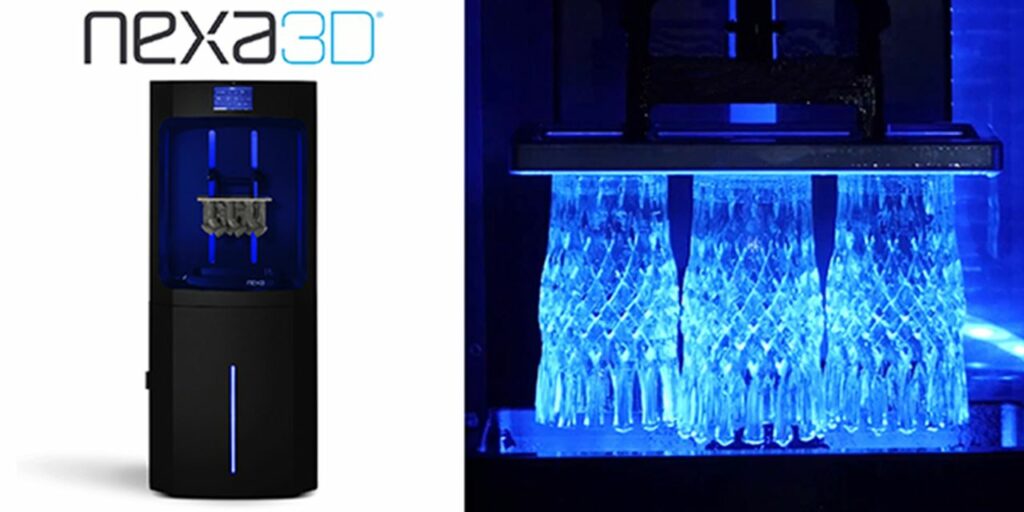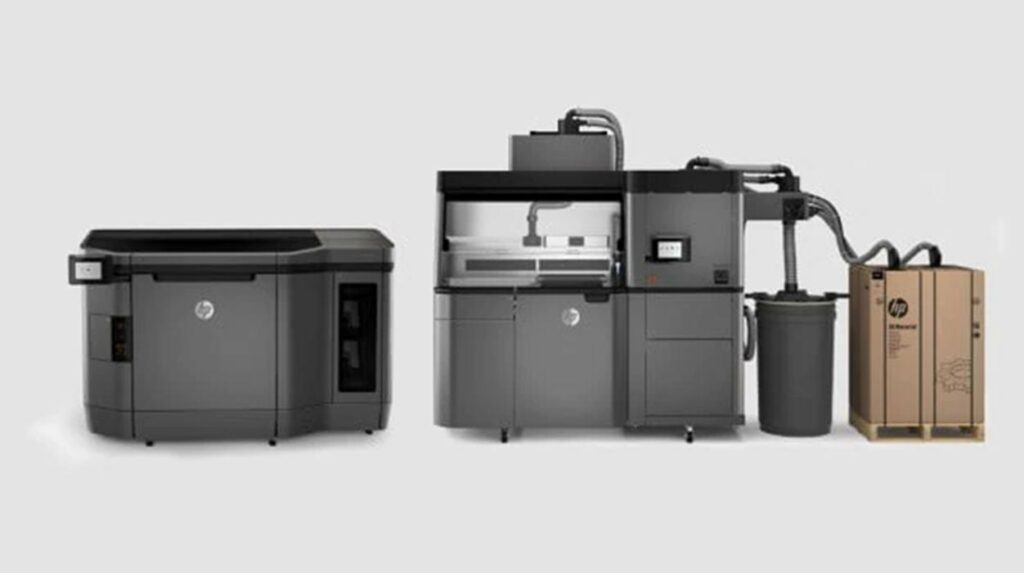
Charles R. Goulding and Preeti Sulibhavi look at the increasing proportion of 3D printing solutions shown at the bi-annual IMTS show.
This year’s 2022 IMTS Chicago show is scheduled for September 12th thru the 17th. With the immense popularity of the current Hulu TV series, The Bear, many attendees will be wanting to try an Italian beef sandwich.
IMTS historically was a machine tool show. With fifty 3D printer exhibitors and digital manufacturing vendors, the show is now a complete Industry 4.0 show. From the list of fifty, we have highlighted some companies, many of which have been featured on Fabbaloo.
Nexa3D, Inc.

Nexa3D pioneered two new print engines that are designed for high-speed production applications: the Lubricant Sublayer Photo-curing (LSPc) print engine for photoplastics and Quantum Laser Sintering. In addition, Fabbaloo’s former editor, Sarah Goehrke, is now the Senior Director at Nexa3D. It’s a small world.
Azul 3D, Inc.
Azul 3D is a leading-edge 3D printing company that is transforming the additive manufacturing (AM) industry. The initial printers based upon High Area Rapid Printing (HARP) are capable of manufacturing parts at production speeds, regardless of size, with a throughput dramatically outpacing its competitors and becoming competitive with injection molding. We have written about how Azul 3D is working with Wilson to create 3D printed pickleball paddles.
BigRep America, Inc.

We have covered how BigRep has designed and produced a fully 3D printed green wall called the BANYAN Eco Wall, which includes an embedded watering system that helps conserve water by only watering plants with the necessary amount of water and no waste. Furthermore, the composition of the eco wall being fully 3D printed could allow for quicker and more efficient expansion of this technology and help fight water scarcity.
Desktop Metal
Desktop Metal is one of the 3D printing industry’s leading companies. It supports manufacturing with metal, polymer, sandcasting, and other 3D printing solutions. Focusing on advanced manufacturing, materials, and robotics, the company is addressing the hurdles of speed, cost, and quality to make 3D printing an essential tool for engineers and manufacturers. We have written about how Desktop Metal acquired Aidro at the end of 2021, and the impacts of that acquisition.
HP Inc.

HP Inc. is a global leader in printing solutions, including 2D and 3D printers. We have covered HP’s 3D printing attributes in multiple articles including: HP Inc Announcing Major Layoffs and Stock Buybacks, Cimquest’s 2019 HP Roadshow Exhibits Top Talent in 3D Printing, HP Inc: Can’t Bring a Musket to a Drone Fight, Barron’s Bullish Stance on HP Inc, and The Power of the HP inc 3D Printing Ecosystem.
Inkbit
In 2019, Saint-Gobain, the multinational construction materials giant, invested in a small Massachusetts-based company called Saint-Gobain to help them develop and improve 3D printers that use machine vision and artificial intelligence (AI) for better manufacturing results.
Lincoln Electric Additive Solutions
Baker Industries, a Lincoln Electric Company, is a Michigan-based, industry-leading provider of tooling, prototypes, low-volume components, CNC machining, fabrication, additive manufacturing (plastic/metal, large/small), and more. With five state-of-the-art facilities and a plethora of cutting-edge equipment, they are one of the industry’s most qualified, capable, and diversified suppliers. In fact, we have covered Lincoln Electric on Fabbaloo in May of this year concerning its welding and 3D printing practices.
Stratasys
A few of our team members had the opportunity to attend the Experience Stratasys: Manufacturing event where newly developed and improved 3D printing machines, technology and materials were showcased.
Stratasys is leading the global shift to additive manufacturing with innovative 3D printing solutions for industries like aerospace, automotive, consumer products and healthcare. Through smart and connected 3D printers, polymer materials, a software ecosystem, and parts on demand, Stratasys delivers competitive advantages at every stage in the product value chain.
Thermwood Corporation
Thermwood is a U.S. based, multinational, diversified machinery manufacturer and is the technology leader in large scale additive manufacturing of thermoplastic composite molds, tooling, patterns and parts with its line of LSAM (Large Scale Additive Manufacturing) machines that both 3D print and trim on the same machine.
We have covered Thermwood in a previous Fabbaloo article as it related to their LSAM 60 mm melt core technology that reinforces AM applications in mold production.
Wurth Additive Group
Wurth is a 3D printing services company that offers a streamlined and efficient method to simplify client supply chain issues, reduce development times and increase the ability to adapt to its customers’ needs. They offer industrial 3D printers, consumables, 3D printing materials and 3D scanners to streamline global supply chains and increase adaptability. It is also the world’s largest fastener distribution company for in-field 3D printed replacement parts.
Baker Hughes, a massive energy technology company, has its own 3D printing capabilities and a partnership with the North American subsidiary of the Wurth Group, called WINA.
The Research & Development Tax Credit
The now permanent Research and Development (R&D) Tax Credit is available for companies developing new or improved products, processes and/or software.
3D printing can help boost a company’s R&D Tax Credits. Wages for technical employees creating, testing and revising 3D printed prototypes can be included as a percentage of eligible time spent for the R&D Tax Credit. Similarly, when used as a method of improving a process, time spent integrating 3D printing hardware and software counts as an eligible activity. Lastly, when used for modeling and preproduction, the costs of filaments consumed during the development process may also be recovered.
Whether it is used for creating and testing prototypes or for final production, 3D printing is a great indicator that R&D Credit eligible activities are taking place. Companies implementing this technology at any point should consider taking advantage of R&D Tax Credits. Start-ups have unique R&D tax credits wherein they can receive it in the form of a cash rebate.
Conclusion
We feel that IMTS 2022 is a must-attend event. The opportunity for 3D printing to showcase its talent and demonstrate its role as part of Industry 4.0 right beside machine tools, which is now a major attribute of this trade show.

